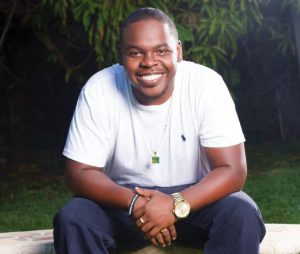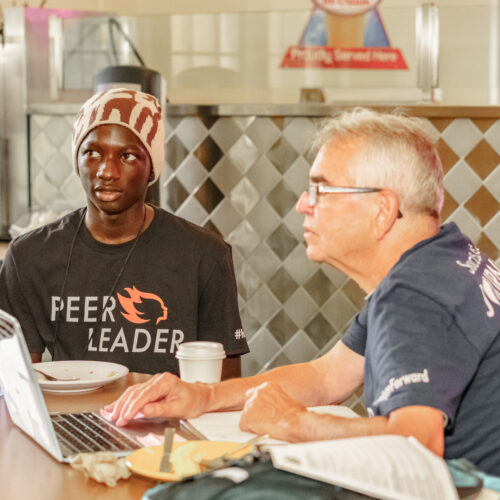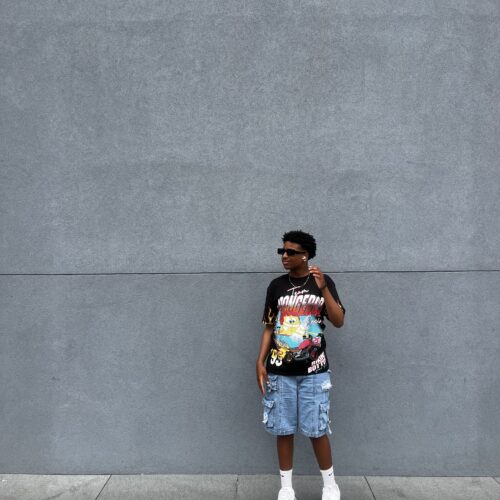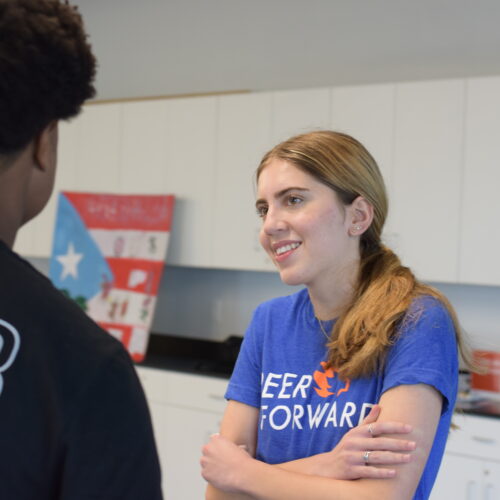 Imagine a still lake on a sunny day. A single drop of rain hits the water’s surface and ripples begin to appear. I am a ripple.
Imagine a still lake on a sunny day. A single drop of rain hits the water’s surface and ripples begin to appear. I am a ripple.
On Aug. 24, 2009, a friend changed the course of my life. As senior year in high school loomed ahead, the word “college” was falling off the tongues of every teacher and relative. “Where are you going to college?” “What do you want to study?”
But the closer we got to the first day of school, the more uncertainty weighed me down. What were my life goals? Where would I be in five years? Am I college material? Is college even worth my time? I struggled to define my purpose and path, like many of my friends and classmates.
But on the first day of my senior year, everything changed.
I woke up anxious, more so than at the start of any other year. My school’s main hallway was packed like sardines when I arrived, everyone talking excitedly about their summer breaks. I was nervous—I knew this was the beginning of the end, and I didn’t know what came after high school. I remember seeing the smiling face of my best friend, Ashley Daniels, as she walked toward me.
Ashley got right to the point: “So where do you want to go to college?”
“I don’t know.” I shrugged.
Ashley was shocked. “What are you going to do with your life?”
I told her about my hesitation to apply to college. She knew me to be a stubborn guy, so instead of criticizing my fears she gave me a college planning challenge. “We can change this together. Let’s make a deal! I have five schools on my college wish list already. If you apply, and we both are accepted into the same school, we can go to college together!” That was a deal I couldn’t refuse.
Ashley certainly stood out—she didn’t spend her summer wasting time, lounging around like most of my peers. She went off to become a Peer Leader with PeerForward, a college planning program that I knew was in my school, but I had no intention of taking part in. Ashley attended their summer workshop and came back to school excited to apply for college, and with a tool belt of resources to make it happen. The PeerForward workshop was the first time that someone had told Ashley that she was worthy of a higher education. She said it changed her life, and she wanted to pay it forward and help change the lives of her friends.
For the next four months, she sat next to me after school every day while I wrote my personal statement, filled out applications, and even filed the FAFSA—a mysterious and confusing document that I understood very little about. I couldn’t have done it without her.
I had always admired Ashley, but seeing her walk the hallways with her “Peer Leader” shirt, I felt lucky to be her best friend. She quickly became someone my classmates trusted. They trusted her and the other Peer Leaders to tell it like it is—that college was possible for all of us, no bull. Ashley helped us understand that if she could do it, so could we.
This is what PeerForward refers to as the phenomena of “student activation.” Student activation isn’t just about having a voice, it’s about actually doing something with it. It’s about touching other peoples’ lives and creating ripples of change.
Think about every major movement in our nation’s history: it all boils down to positive peer pressure. Whether it’s civil rights, women’s suffrage, immigration reform, or presidential elections. When we march, vote, or stand up for justice—we do it alongside our friends. They get us involved, bought into the idea that we can be the change we want to see in the world. They make us believe in ourselves.
Student activation is the most powerful tool we have at our disposal to encourage students in under-served communities to attend college.
I’m living proof.
Two years ago, I received my BA from the University of South Florida, where Ashley and I were roommates. I immediately became a volunteer for PeerForward, and now I am serving as their Alumni Fellow. I wrote this from my desk at their national office in Washington, D.C., where I help students like me find their way to college.
Ashley was the drop of rain; I am the ripple of change.











